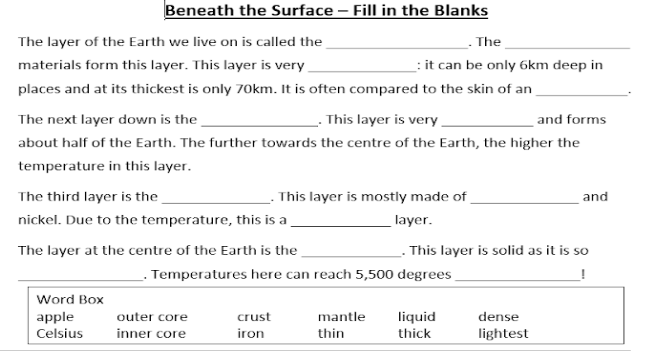12 June - 18 June
Section outline
-
EXPLORE / TŪHURA learning intentions:
- We are EXPLORING to be able to weigh up the strengths and weaknesses of sources and decide how reliable a source is.
- We are EXPLORING the Earth’s age and history. explain the structure of the Earth.
- We are EXPLORING the explain the structure of the Earth and how it has changed over time.
Earth – Where do Volcanoes Come From?
Lesson Aim: TBAT describe Earth’s age and history and explain the structure of the Earth.
What do you know about Earth and volcanoes?
Task:
Mind map what your table knows about the Earth and volcanoes – do this on the A3 paper provided.
Move to a different table in the room and each take note of something different on that groups mind map.
Come back to your table and add what you have found out.
Be prepared to share your mind map with the rest of the class.
4.5billion years ago – Earth was formed (The Big Bang)
65 million years ago – dinosaurs disappeared
4 million years ago – apes appeared
100,000 years ago to present day – Homo Sapiens (modern human)
10,000 years ago – starting point of modern recorded History
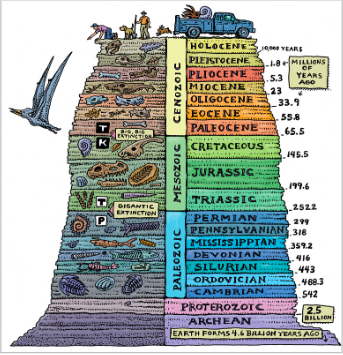
Task:
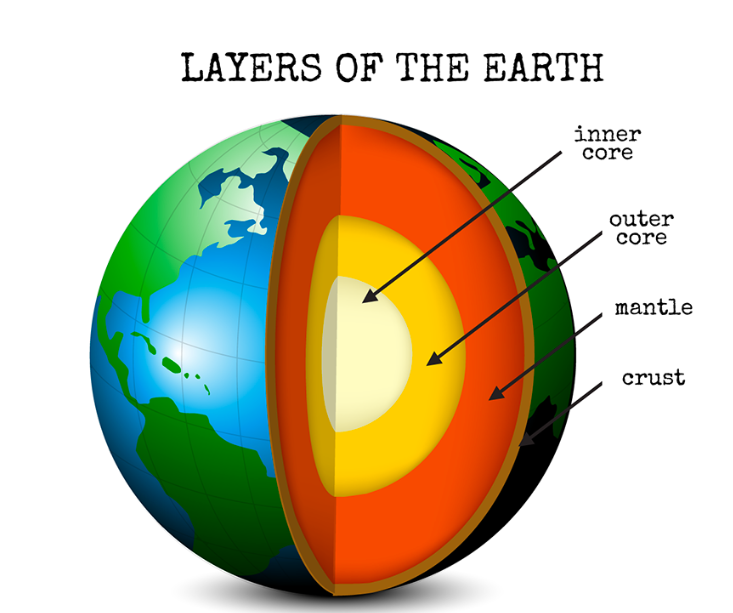
On a full page make a sketch of the diagram on the board in your book.
Listen and watch the video clip and add some notes to each section of the earth.
The Earth’s Four Layers…
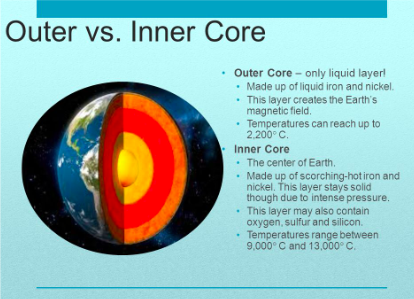
The Inner Core
Solid
5,150-6,360km below the Earths surface
Iron and some nickel
The Outer Core
Liquid
2,890-5,150km below the Earths surface
Iron and nickel
The Mantle…
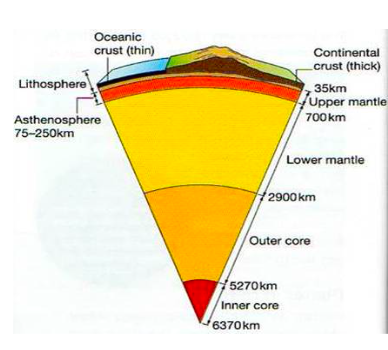
Thickest layer of earth
35-2,890km below the surface of the Earth
Solid
Molten hot rock known as magma
Tectonic plate movement
The Crust…
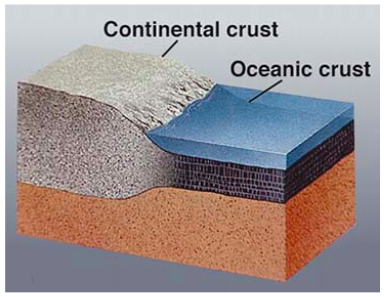
Thinnest layer of the Earth
Two types of crust: oceanic and continental
0-35km thick
Solid
Oceanic:
Basalt
Under the sea
Young
Thinner
denser
Continental:
Granite
Under the continents
Old
Thicker
Less dense
Plenary - show me what you know.
Rewrite the paragraph in your book using the words below to fill in the blanks.
